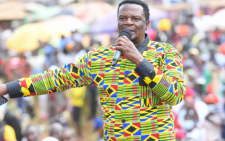Unpacking transformative CBE – part 2

Kenya’s education system has undergone several transformative phases, each shaped by the nation’s evolving social, economic, and development needs. The journey began with the 7-4-2-3 system, introduced in 1965 following recommendations of the Ominde Report (1964).
This system aimed to Africanise education after independence, aligning learning with national development goals and fostering unity.
Two decades later, in response to shifting priorities and the need for more practical skills among graduates, the 8-4-4 system was born. Recommended by the Mackay Report (1984) and implemented in 1985, it emphasised technical and vocational education to prepare learners for self-reliance in a rapidly modernising economy.
However, as the world advanced and Kenya’s development agenda became more focused on innovation, global competitiveness, and inclusive growth, the limitations of the 8-4-4 model became apparent. The system was heavily examination-oriented, content-laden, and often failed to recognise learners’ diverse abilities and talents.
This led to the birth of the 2-6-3-3-3 system, anchored in the Competency-Based Education (CBE) framework. Launched in 2017, after extensive stakeholder consultation and piloting in 2016, the new curriculum aims to nurture the full potential of every learner by focusing not just on knowledge, but also on skills, values, and competencies necessary for life and work in the 21st century.
In Part 1 of 5 of this series, the levels of CBE, the transformative learning approaches and how the power of ICT is harnessed was unpacked and it continues.
Selection of learners
As CBE system advances into the senior school level, one of its most defining features is the learner-centered approach to selection and placement. The process is guided by clear, inclusive, and transparent principles aimed at aligning each learner’s strengths, interests, and aspirations with their future educational and career paths. This ensures that learners are not just placed arbitrarily, but positioned where they can thrive and contribute meaningfully to society.
At the core of the placement process is the learner-centered principle, which recognises that every student has unique talents and preferences. Rather than a one-size-fits-all approach, placement into the three senior school pathways—Science, Technology, Engineering and Mathematics (STEM); Social Sciences; and Arts and Sports Sciences—is guided by the learner’s abilities, performance, interests, and potential. This empowers learners to take ownership of their academic journey, increasing motivation and engagement.
To promote national development priorities and future skills demand, 60 per cent of learners will be placed in the STEM pathway, ensuring a strong foundation for technological innovation and scientific advancement. 25 per cent will join the Social Sciences pathway, focusing on human behaviour, governance, and societal well-being, while 15 per cent will pursue the Arts and Sports Sciences, nurturing creative and athletic talents essential for cultural expression and wellness.
The process is also anchored on equity and fairness. Regardless of background or location, all learners are given an equal opportunity to access their preferred pathways based on merit and available resources. This is closely tied to the principle of inclusivity, which ensures that learners with disability and those from marginalised communities are adequately supported and considered in placement decisions.
To reinforce public trust, the placement process is conducted with transparency, using open and clearly defined criteria that are accessible to all stakeholders—learners, parents, teachers, and education officers. This clarity reduces bias and promotes confidence in the system.
Once placed, learners will undertake a total of seven learning areas, with four being core. These include English, Kiswahili or Kenya Sign Language, Community Service Learning, and Physical Education. In a recent rejoinder, the government has entrenched mathematics for all the pathways. This blend ensures that while learners specialise in their chosen pathways, they also build foundational competencies essential for holistic growth.
Senior school learning is also grounded in project-based and place-based learning. Learners are challenged to solve real-world problems through hands-on projects and to apply knowledge in the context of their local communities. This approach not only deepens understanding but also nurtures critical thinking, innovation, and civic responsibility.
In sum, the principles guiding selection and placement in Kenya’s senior schools under CBE represent a thoughtful and future-focused framework. By putting the learner at the centre and ensuring fairness, inclusivity, and transparency, Kenya is laying a solid foundation for a skilled, ethical, and empowered generation ready to shape the country’s future.
Categorisation of schools
As Kenya’s CBE continues to take root, senior schooling is undergoing a major shift—one that emphasises choice, specialisation, and inclusivity. To effectively support learners’ interests, talents, and career aspirations, senior schools are being strategically categorised along clear lines of pathways, gender, accommodation, and special needs. This approach is designed to create a more responsive and equitable education system that nurtures the potential of every learner.
Under the CBE structure, senior schools are categorised by pathways, offering either triple or double pathways. A triple pathway school offers all three specialisation areas—Science, Technology, Engineering and Mathematics (STEM); Social Sciences; and Arts and Sports Sciences—allowing students maximum flexibility in choosing a path aligned with their strengths and ambitions. Double pathway schools offer any two of the three, depending on available resources, infrastructure, and staffing. This model ensures that schools cater to diverse learner interests while remaining realistic about institutional capacities.
In addition to pathways, schools are also categorised by gender composition, offering either mixed (co-educational) or single-gender environments. This allows families and learners to choose schooling environments that they feel best support academic performance, personal development, and cultural preferences.
Another key criterion is accommodation. Senior schools are classified as day schools or hybrid schools. Day schools cater to students who commute daily, which is especially suitable for learners living near school facilities. Hybrid schools, on the other hand, are to provide both day and boarding options, accommodating the needs of learners from distant or underserved regions while maintaining accessibility for local students.
This flexibility supports inclusivity and promotes equity in access to quality education.
Importantly, the CBE framework has placed a strong emphasis on learners with different abilities through the categorisation of special needs schools. These institutions are designed to support children with physical, intellectual, or sensory disabilities, offering adaptive teaching strategies, personalised learning materials, and specialised support systems. This inclusive approach ensures that learners with special needs are not left behind, and that their unique potential is equally nurtured.
Together, these categories form a well-thought-out framework that reflects Kenya’s commitment to offering quality, inclusive, and learner-centered education. By organising senior schools based on pathways, gender, accommodation, and special needs, the government is building a flexible education system that adapts to the diverse realities of Kenyan learners. This structure not only empowers students to pursue meaningful and personalised learning journeys but also lays the groundwork for a more equitable and skilled society.
As this new system continues to unfold, success will depend on the collective efforts of educators, parents, policymakers, and communities. With clear structures, inclusive policies, and learner-focused reforms, CBE holds the promise of producing a generation of confident, competent, and responsible citizens—ready to drive Kenya’s social and economic transformation in the 21st century and beyond.
The author is a Professor of Chemistry at University of Eldoret, a former Vice-Chancellor, and a Quality Assurance Expert














